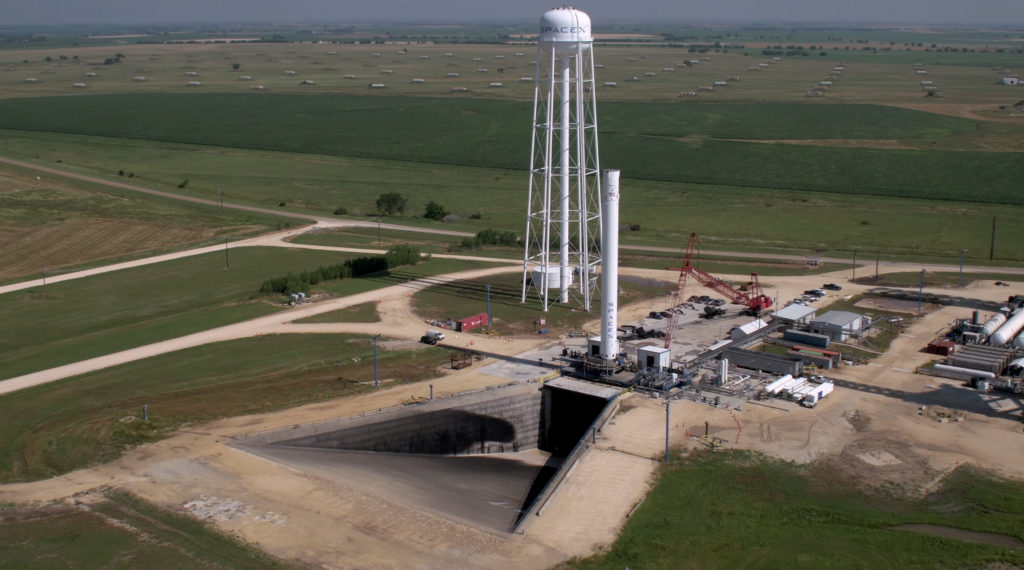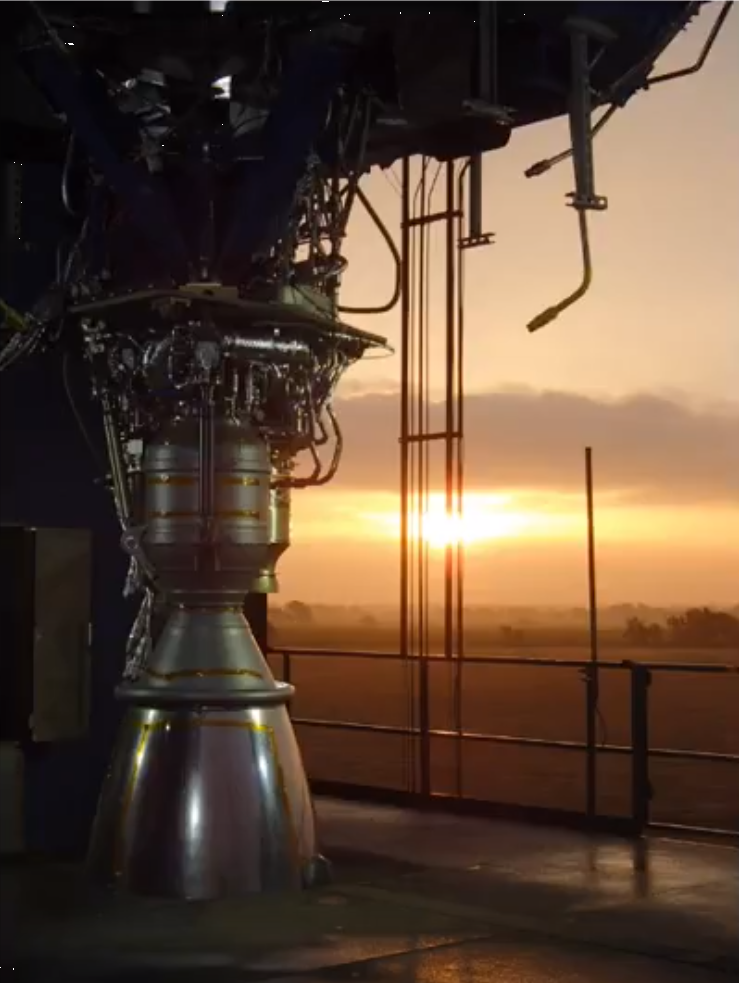
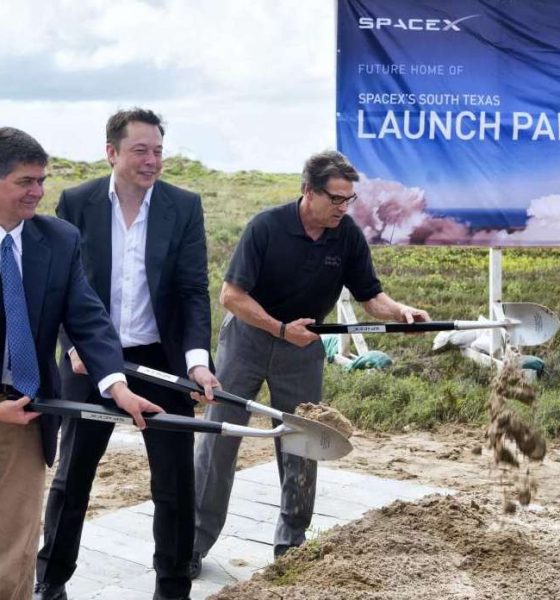
News
SpaceX confirms plan to activate South Texas launch site in late 2018
Following our report that Elon Musk’s space company was progressing on the development of a new launch site in Texas, SpaceX’s Senior Communications Manager James Gleeson has confirmed with Teslarati that the company is, in fact, working towards the activation of its South Texas launch facilities in late 2018, possibly sooner.
“We are currently targeting late 2018 for the site in South Texas to be operational but we’re reviewing our progress and will turn the site online as soon as it’s ready.”
Combined with a comment made in early January by SpaceX President Gwynne Shotwell, BFS development by all appearances is going quite smoothly. Still, it’s likely that the Boca Chica site’s late 2018 “operational” status refers mainly to an ability to support something less than orbital launches, perhaps suborbital testing of BFS. According to a source knowledgeable with SpaceX’s South Texas outlook, there are currently no plans to manufacture BFR in the region, although the company has enjoyed the warm welcomes it’s received from local leaders enthusiastic about the company’s local expansion.
- SpaceX already operates an extensive rocket testing facility in Central Texas, tests that previously included flights of a Falcon 9 reuse demonstrator. (SpaceX)
- The majority of testing done at McGregor is of individual Merlin engines, each of which is fired for around dozens of seconds to verify performance and quality. (SpaceX)
- SpaceX’s current Texas facilities feature a test stand for Raptor, the engine intended to power BFR and BFS to Mars. (SpaceX)
The question of where to test the first Big F____ Spaceship (BFS) prototype also appears to be undecided at the moment, and comments made by CEO Elon Musk immediately after Falcon Heavy’s inaugural launch further confirmed that a couple of different options are under consideration, one of which involves using Boca Chica as a testing facility for the Mars rocket. True orbital launch operations are thus highly unlikely to begin at Boca Chica any earlier than mid-to-late 2019, and that aspirational timeline is of course intimately dependent upon the relatively smooth development and testing of BFS, as well as the potential value SpaceX might see in a fully-private orbital launch complex compatible with their proven Falcon family of rockets. A site wholly dedicated to Starlink launches, for example, could rapidly speed up the internet satellite constellation’s deployment, the completion of which could be a massive source of income capable of funding the company’s interplanetary ambitions.
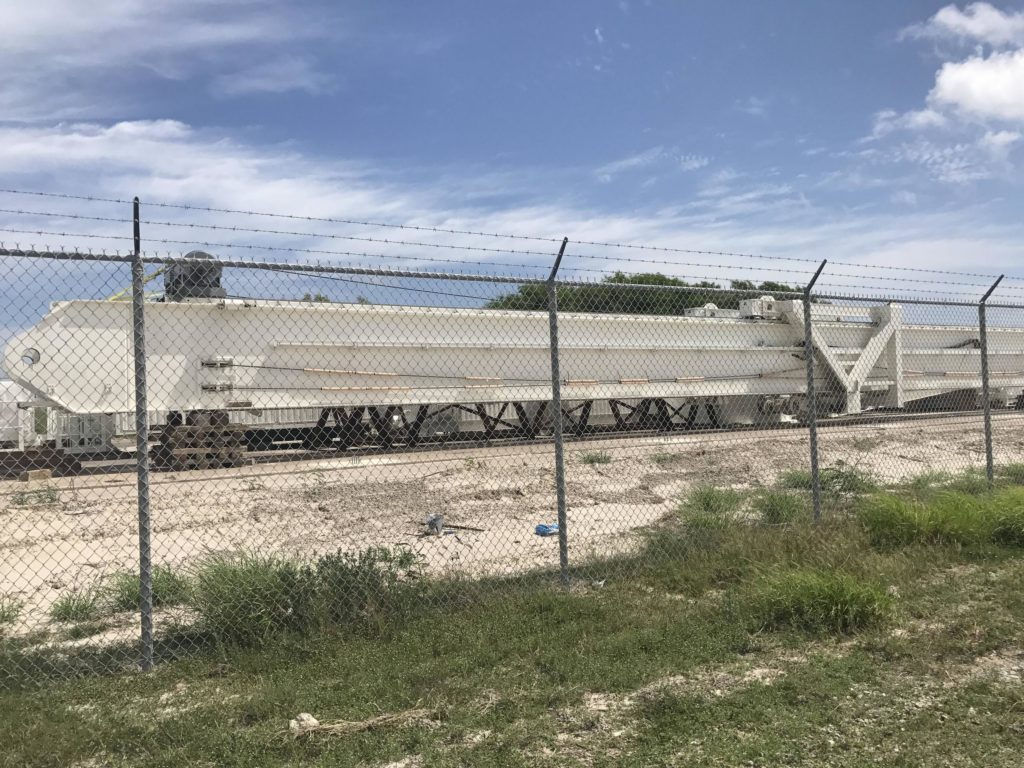
The boom of a giant crane (possibly meant for BFS) seen in late 2017, parked at SpaceX’s Boca Chica facilities. (Reddit /u/ ticklestuff)
While SpaceX’s communications policy reasonably avoids commenting on employee movement, the South Texas site’s late 2018 operational status would undeniably require a fair amount of work, likely on the order of the refurbishment and repair of the SLC-40 pad. This indirectly lends at least a sliver of credence to a recent claim from Space Florida, a state-run economic development agency focused on aerospace, that a portion of the workers involved in the refurbishment of LC-40 and LC-39A’s Falcon Heavy upgrades have begun “working on their Brownsville [TX] site.”
Dale Ketcham, Space Florida: people who worked on LC-39A and SLC-40 here for SpaceX now working on their Brownsville site. Georgia will be offering a spaceport site just as attractive to launch customers as Brownsville.
— Jeff Foust (@jeff_foust) March 1, 2018
Indeed, local South Texas fans of SpaceX have done an outstanding job of tracking the progress made at the Boca Chica launch facility over the last several years, and activity at the site does appear to have exploded in recent months, relative to the several years of quiet landscaping that followed its 2014 announcement.
Most recently, the addition of a solar array installation, Tesla Powerpacks, and an 800-kilowatt generator gives the construction zone the ability to generate considerably more than 1MW of grid-independent power, likely more than enough to operate both a bevy of construction equipment and SpaceX’s Crew Dragon communications complex.
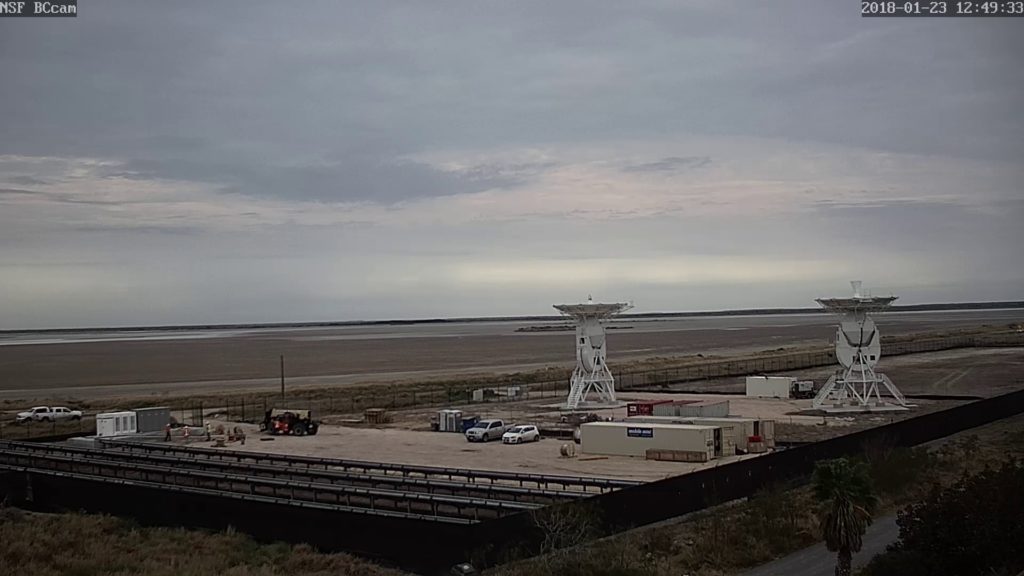
Solar installation at SpaceX’s facility in Boca Chica, Texas [Credit: Nomadd via NASASpaceFlight.com Forum]
Ultimately, it’s all but guaranteed that significant increases in construction and development activity (or the lack thereof) will be immediately noted and communicated by observant locals. If SpaceX hopes to make its South Texas site operational before the end of the year, major work can be expected to begin within a handful of months at most. In the meantime, activities in Los Angeles, CA, particularly the Port of San Pedro, will offer another source of data on BFS’ development progress. Now we wait…
Get real-time updates from our Space Team and follow:
- Teslarati – Instagram (live stories) – Twitter
- Tom Cross – Twitter
- Pauline Acalin – Twitter
- Eric Ralph – Twitter

News
Tesla aims to combat common Full Self-Driving problem with new patent
Tesla writes in the patent that its autonomous and semi-autonomous vehicles are heavily reliant on camera systems to navigate and interact with their environment.

Tesla is aiming to combat a common Full Self-Driving problem with a new patent.
One issue with Tesla’s vision-based approach is that sunlight glare can become a troublesome element of everyday travel. Full Self-Driving is certainly an amazing technology, but there are still things Tesla is aiming to figure out with its development.
Unfortunately, it is extremely difficult to get around this issue, and even humans need ways to combat it when they’re driving, as we commonly use sunglasses or sun visors to give us better visibility.
Cameras obviously do not have these ways to fight sunglare, but a new patent Tesla recently had published aims to fight this through a “glare shield.”
Tesla writes in the patent that its autonomous and semi-autonomous vehicles are heavily reliant on camera systems to navigate and interact with their environment.

The ability to see surroundings is crucial for accurate performance, and glare is one element of interference that has yet to be confronted.
Tesla described the patent, which will utilize “a textured surface composed of an array of micro-cones, or cone-shaped formations, which serve to scatter incident light in various directions, thereby reducing glare and improving camera vision.”

The patent was first spotted by Not a Tesla App.
The design of the micro-cones is the first element of the puzzle to fight the excess glare. The patent says they are “optimized in size, angle, and orientation to minimize Total Hemispherical Reflectance (THR) and reflection penalty, enhancing the camera’s ability to accurately interpret visual data.”
Additionally, there is an electromechanical system for dynamic orientation adjustment, which will allow the micro-cones to move based on the angle of external light sources.
This is not the only thing Tesla is mulling to resolve issues with sunlight glare, as it has also worked on two other ways to combat the problem. One thing the company has discussed is a direct photon count.
CEO Elon Musk said during the Q2 Earnings Call:
“We use an approach which is direct photon count. When you see a processed image, so the image that goes from the sort of photon counter — the silicon photon counter — that then goes through a digital signal processor or image signal processor, that’s normally what happens. And then the image that you see looks all washed out, because if you point the camera at the sun, the post-processing of the photon counting washes things out.”
Future Hardware iterations, like Hardware 5 and Hardware 6, could also integrate better solutions for the sunglare issue, such as neutral density filters or heated lenses, aiming to solve glare more effectively.
Elon Musk
Delaware Supreme Court reinstates Elon Musk’s 2018 Tesla CEO pay package
The unanimous decision criticized the prior total rescission as “improper and inequitable,” arguing that it left Musk uncompensated for six years of transformative leadership at Tesla.

The Delaware Supreme Court has overturned a lower court ruling, reinstating Elon Musk’s 2018 compensation package originally valued at $56 billion but now worth approximately $139 billion due to Tesla’s soaring stock price.
The unanimous decision criticized the prior total rescission as “improper and inequitable,” arguing that it left Musk uncompensated for six years of transformative leadership at Tesla. Musk quickly celebrated the outcome on X, stating that he felt “vindicated.” He also shared his gratitude to TSLA shareholders.
Delaware Supreme Court makes a decision
In a 49-page ruling Friday, the Delaware Supreme Court reversed Chancellor Kathaleen McCormick’s 2024 decision that voided the 2018 package over alleged board conflicts and inadequate shareholder disclosures. The high court acknowledged varying views on liability but agreed rescission was excessive, stating it “leaves Musk uncompensated for his time and efforts over a period of six years.”
The 2018 plan granted Musk options on about 304 million shares upon hitting aggressive milestones, all of which were achieved ahead of time. Shareholders overwhelmingly approved it initially in 2018 and ratified it once again in 2024 after the Delaware lower court struck it down. The case against Musk’s 2018 pay package was filed by plaintiff Richard Tornetta, who held just nine shares when the compensation plan was approved.
A hard-fought victory
As noted in a Reuters report, Tesla’s win avoids a potential $26 billion earnings hit from replacing the award at current prices. Tesla, now Texas-incorporated, had hedged with interim plans, including a November 2025 shareholder-approved package potentially worth $878 billion tied to Robotaxi and Optimus goals and other extremely aggressive operational milestones.
The saga surrounding Elon Musk’s 2018 pay package ultimately damaged Delaware’s corporate appeal, prompting a number of high-profile firms, such as Dropbox, Roblox, Trade Desk, and Coinbase, to follow Tesla’s exodus out of the state. What added more fuel to the issue was the fact that Tornetta’s legal team, following the lower court’s 2024 decision, demanded a fee request of more than $5.1 billion worth of TSLA stock, which was equal to an hourly rate of over $200,000.
Delaware Supreme Court Elon Musk 2018 Pay Package by Simon Alvarez
News
Tesla Cybercab tests are going on overdrive with production-ready units
Tesla is ramping its real-world tests of the Cybercab, with multiple sightings of the vehicle being reported across social media this week.

Tesla is ramping its real-world tests of the Cybercab, with multiple sightings of the autonomous two-seater being reported across social media this week. Based on videos of the vehicle that have been shared online, it appears that Cybercab tests are underway across multiple states.
Recent Cybercab sightings
Reports of Cybercab tests have ramped this week, with a vehicle that looked like a production-ready prototype being spotted at Apple’s Visitor Center in California. The vehicle in this sighting was interesting as it was equipped with a steering wheel. The vehicle also featured some changes to the design of its brake lights.
The Cybercab was also filmed testing at the Fremont factory’s test track, which also seemed to involve a vehicle that looked production-ready. This also seemed to be the case for a Cybercab that was spotted in Austin, Texas, which happened to be undergoing real-world tests. Overall, these sightings suggest that Cybercab testing is fully underway, and the vehicle is really moving towards production.
Production design all but finalized?
Recently, a near-production-ready Cybercab was showcased at Tesla’s Santana Row showroom in San Jose. The vehicle was equipped with frameless windows, dual windshield wipers, powered butterfly door struts, an extended front splitter, an updated lightbar, new wheel covers, and a license plate bracket. Interior updates include redesigned dash/door panels, refined seats with center cupholders, updated carpet, and what appeared to be improved legroom.
There seems to be a pretty good chance that the Cybercab’s design has been all but finalized, at least considering Elon Musk’s comments at the 2025 Annual Shareholder Meeting. During the event, Musk confirmed that the vehicle will enter production around April 2026, and its production targets will be quite ambitious.
